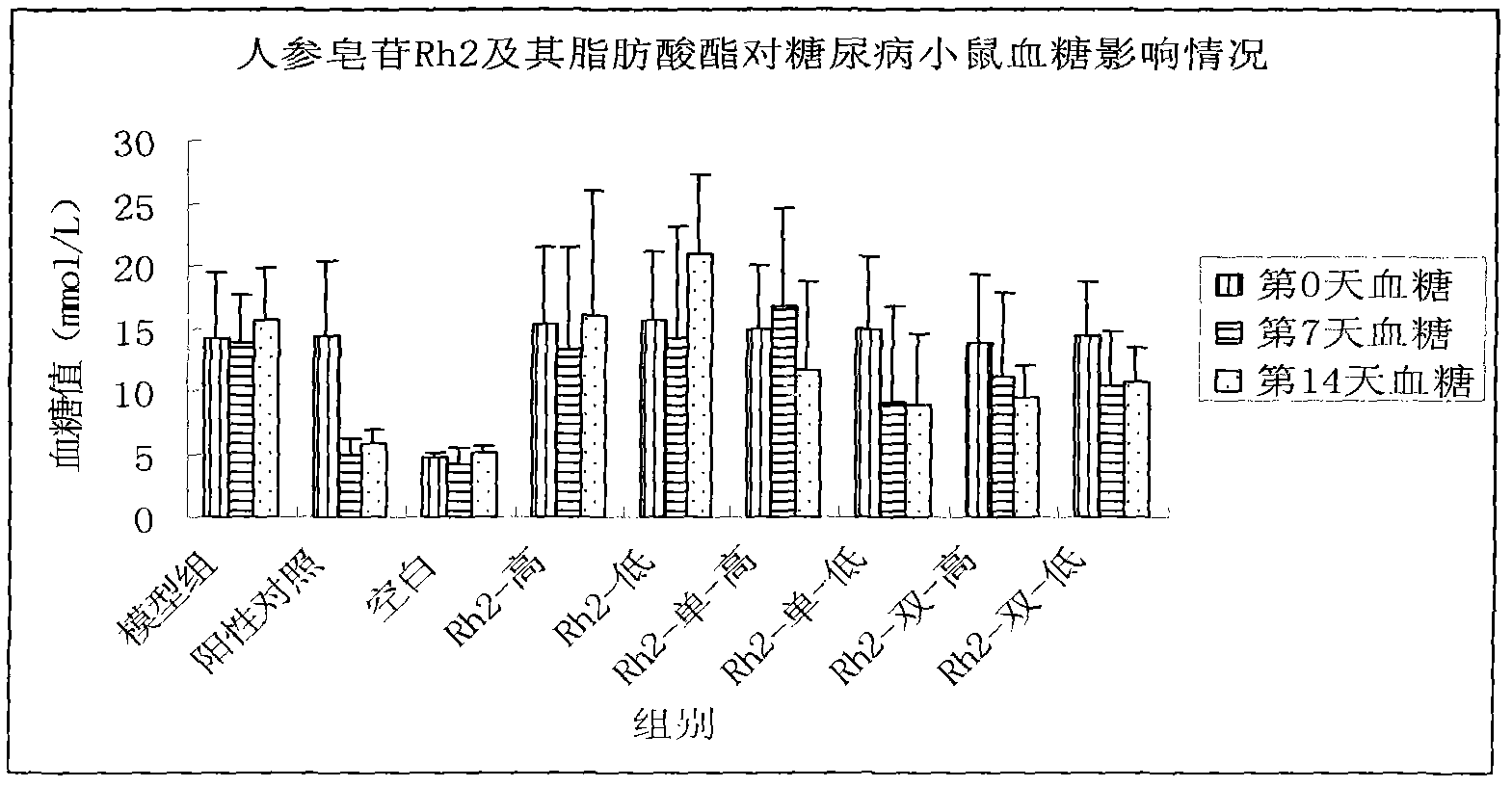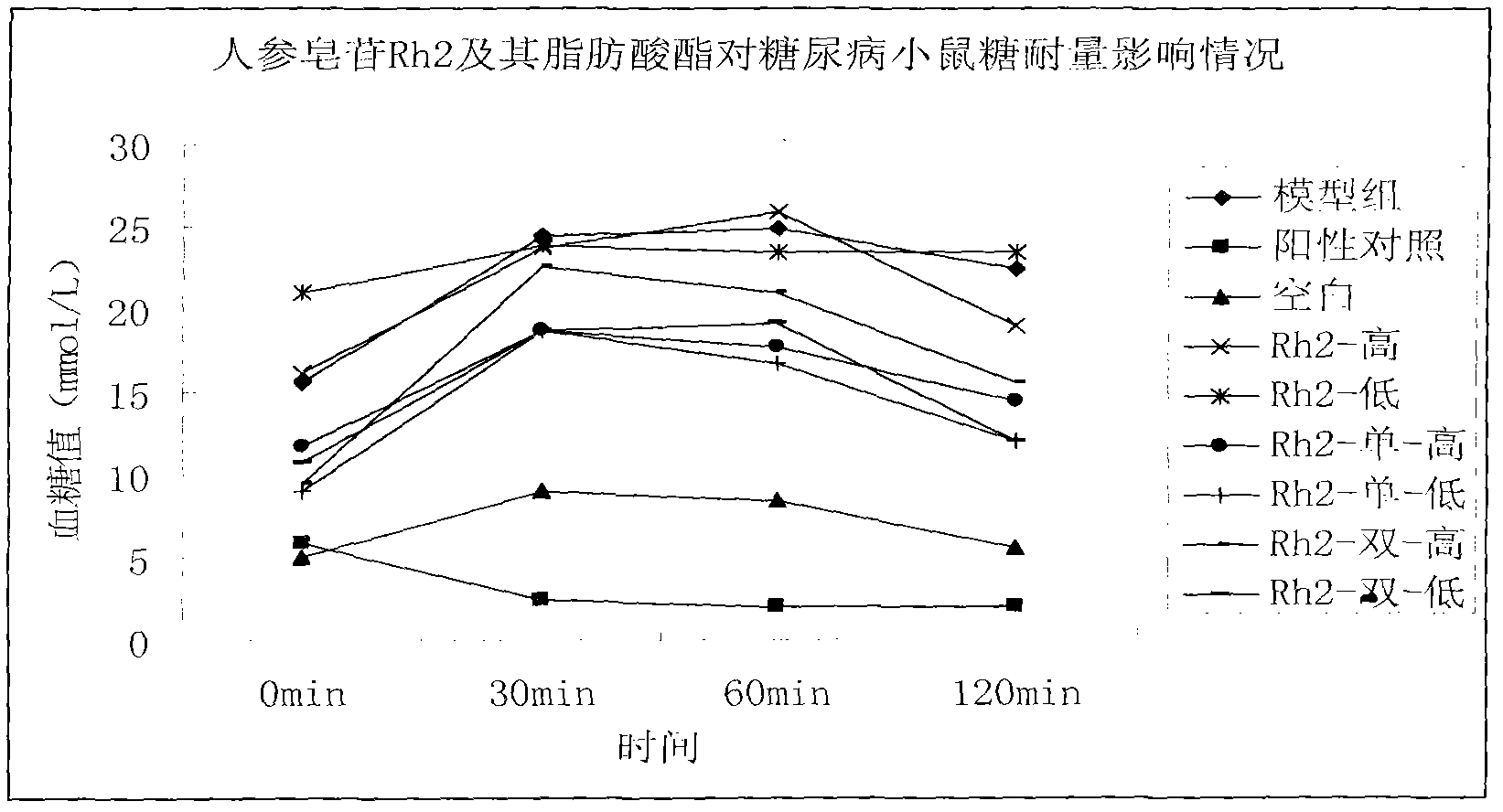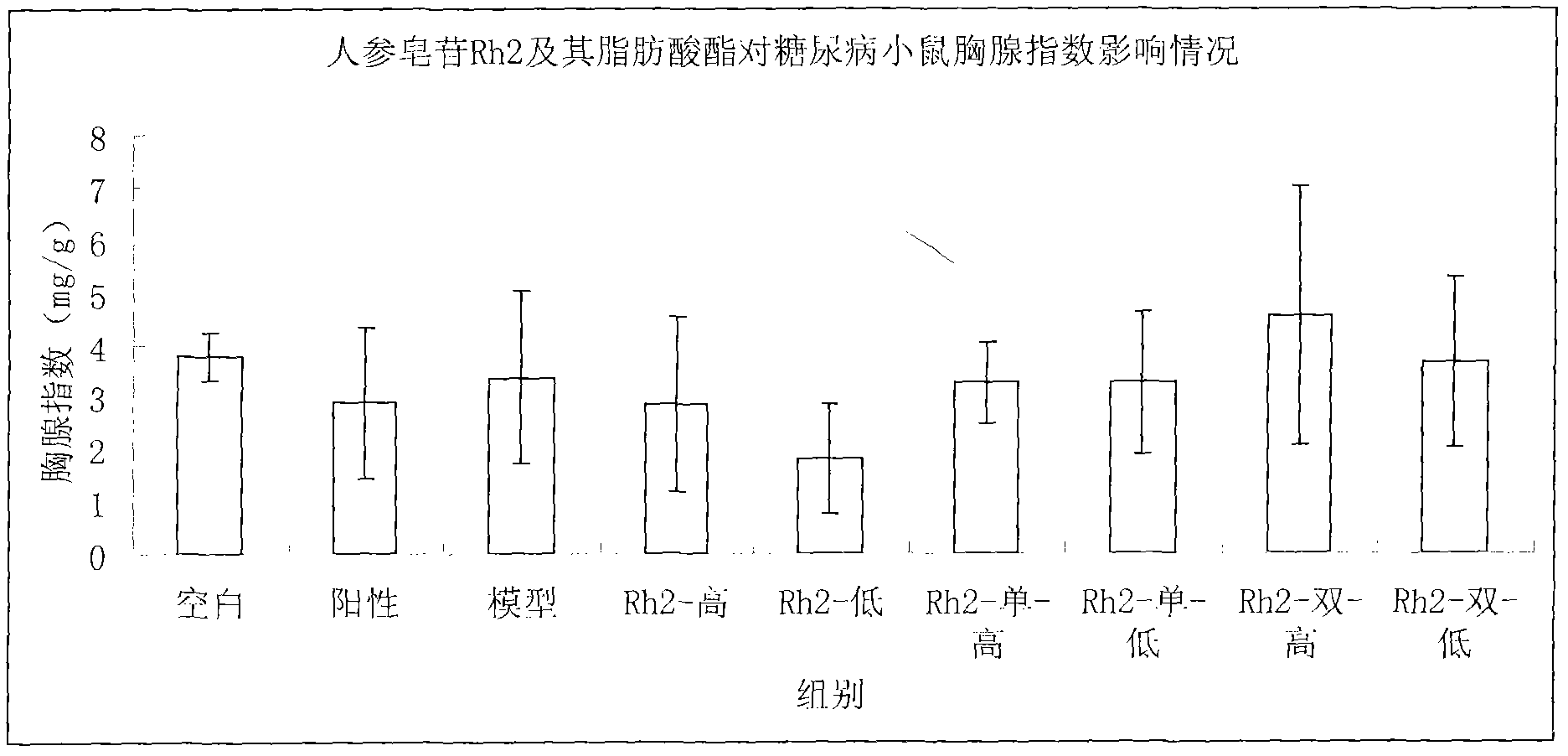Application of ginseng secondary saponin and aliphatic ester derivative thereof in preventing and treating diabetes mellitus
A fatty acid ester and secondary saponin technology, applied in the field of medicine, can solve problems such as inconsistent experimental results, different content and components, unfavorable mechanism of action, etc., and achieve the effect of improving glucose tolerance
- Summary
- Abstract
- Description
- Claims
- Application Information
AI Technical Summary
Problems solved by technology
Method used
Image
Examples
experiment example 3
[0198] 5.3 Experimental Example 3 Effect of Ginsenosides on Glucose Consumption in C2C12 Cells
[0199] 5.3.1 Materials
[0200] 5.3.1.1 Main reagents
[0201] Penicillin and streptomycin were purchased from Sigma Company; DMEM culture medium, fetal bovine serum (FBS), horse serum (Horse serum, HS) were purchased from Hyclone Company; ginsenosides were isolated from the laboratory .
[0202] 5.3.1.2 Cell lines
[0203] The C2C12 myoblast cell line was provided by the Department of Pharmacology, Bethune School of Medicine, Jilin University.
[0204] 5.3.1.3 Main instruments
[0205] Microplate reader; vortex mixer; electronic balance; 24-well cell culture plate, etc.
[0206] 5.3.2 Experimental method
[0207] 5.3.2.1 C2C12 myoblast culture and induction of myotube differentiation
[0208] Normal mouse skeletal muscle C2C12 myoblasts were inoculated in culture flasks, in DMEM medium containing 10% fetal bovine serum (containing penicillin 100IU / mL, streptomycin 100IU / mL)...
PUM
 Login to View More
Login to View More Abstract
Description
Claims
Application Information
 Login to View More
Login to View More - R&D
- Intellectual Property
- Life Sciences
- Materials
- Tech Scout
- Unparalleled Data Quality
- Higher Quality Content
- 60% Fewer Hallucinations
Browse by: Latest US Patents, China's latest patents, Technical Efficacy Thesaurus, Application Domain, Technology Topic, Popular Technical Reports.
© 2025 PatSnap. All rights reserved.Legal|Privacy policy|Modern Slavery Act Transparency Statement|Sitemap|About US| Contact US: help@patsnap.com



